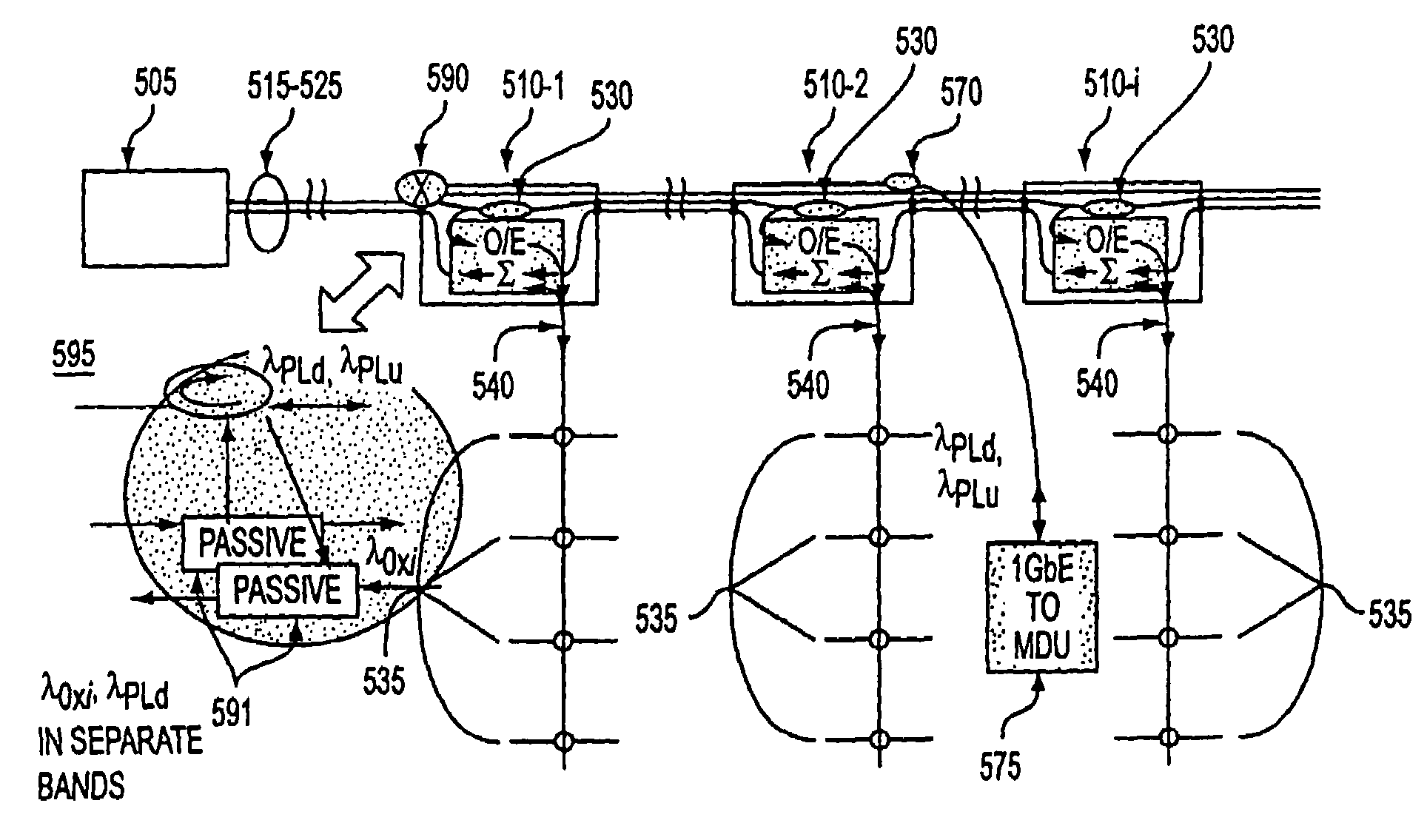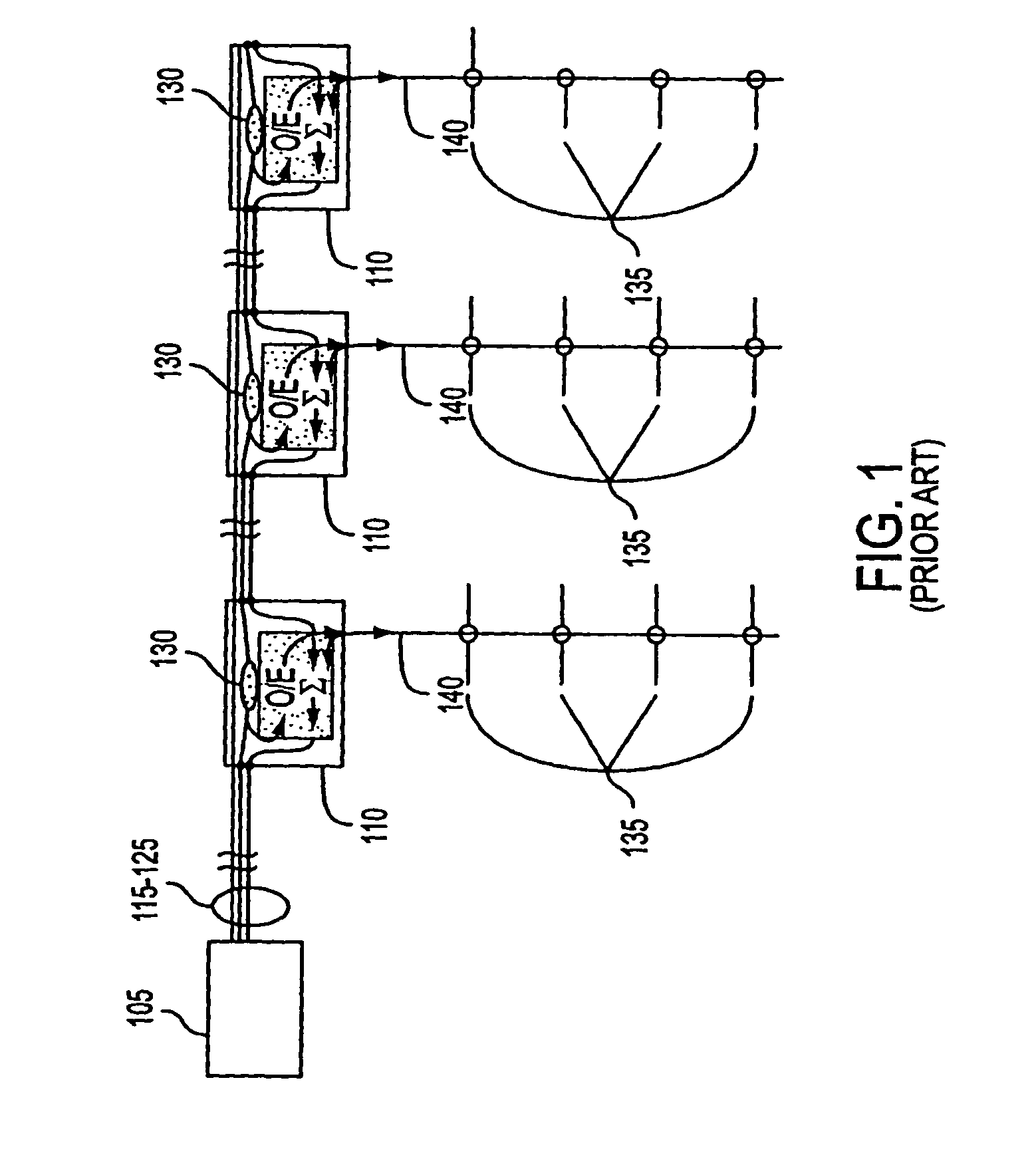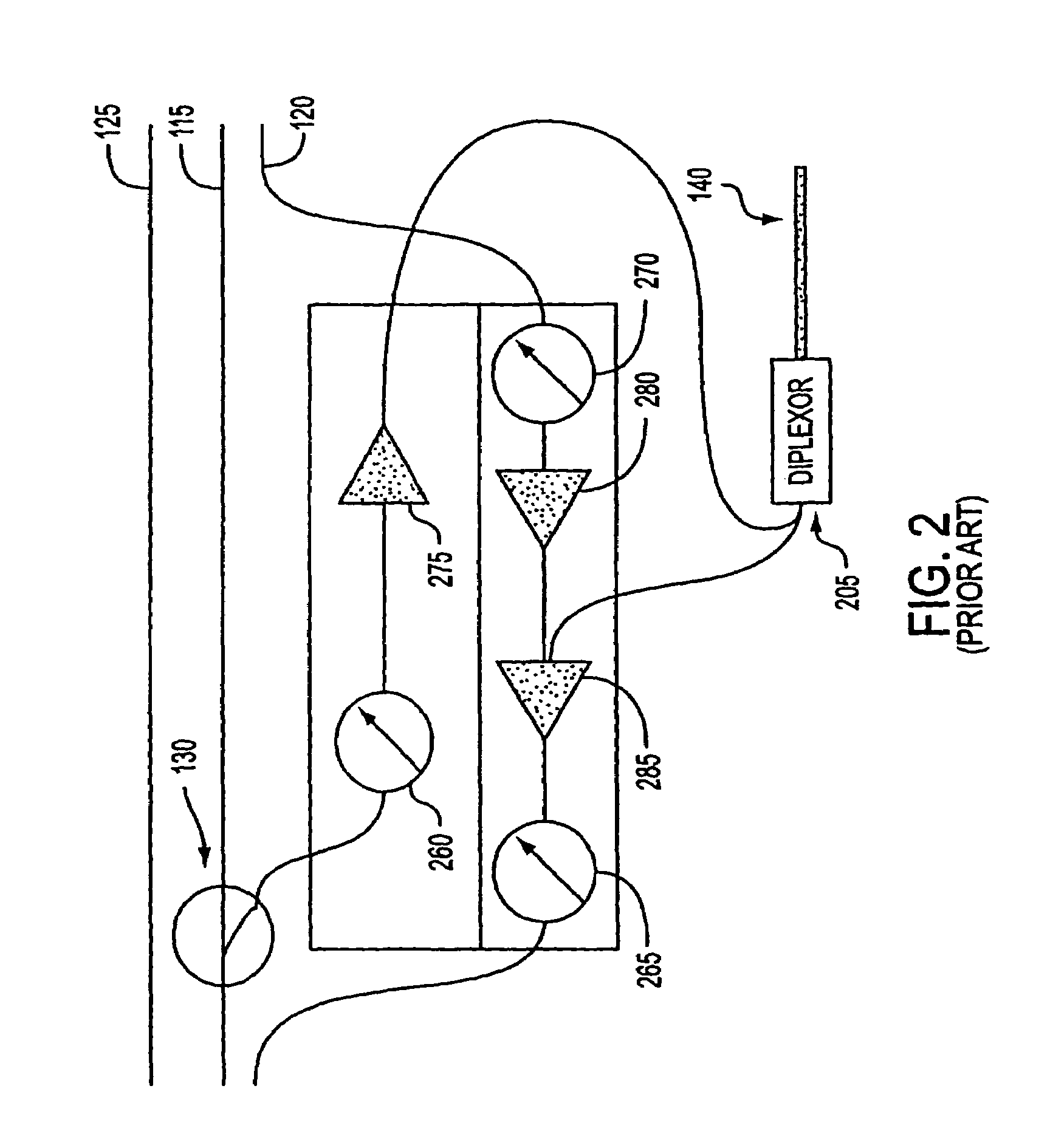Fiber access architecture capable of being seamlessly upgraded
a fiber access and fiber technology, applied in multiplex communication, electrical equipment, wavelength division multiplex systems, etc., can solve the problem of reducing the probability that the services will disrupt one another, and achieve the effect of efficient upgrade and convenient provision of new wavelengths
- Summary
- Abstract
- Description
- Claims
- Application Information
AI Technical Summary
Benefits of technology
Problems solved by technology
Method used
Image
Examples
Embodiment Construction
[0029]FIGS. 1 and 2 describe the prior art HFC architecture. FIG. 1 is an exemplary prior art HFC architecture. The exemplary HFC architecture used for explanatory purposes herein is AT&T's Oxiom architecture, which is a cost efficient fiber-deep architecture. The nodes for the Oxiom architecture are called Ox-nodes. It should be clear that the present invention is applicable to any similar HFC or PON system / architecture and is not limited to the Oxiom architecture. For purposes of the description presented herein “node” can be an Ox-node or any similarly configured node of any similar HFC or PON architecture.
[0030]In the Oxiom architecture one fiber is used for downstream transmission, and a second fiber is used for upstream transmission. Within each node there is an optical power tap, which splits or draws off a fraction of the optical power of all the wavelengths and outputs a portion of the power to the node and passes the remaining power on down the fiber to the next node or no...
PUM
 Login to View More
Login to View More Abstract
Description
Claims
Application Information
 Login to View More
Login to View More - R&D
- Intellectual Property
- Life Sciences
- Materials
- Tech Scout
- Unparalleled Data Quality
- Higher Quality Content
- 60% Fewer Hallucinations
Browse by: Latest US Patents, China's latest patents, Technical Efficacy Thesaurus, Application Domain, Technology Topic, Popular Technical Reports.
© 2025 PatSnap. All rights reserved.Legal|Privacy policy|Modern Slavery Act Transparency Statement|Sitemap|About US| Contact US: help@patsnap.com



